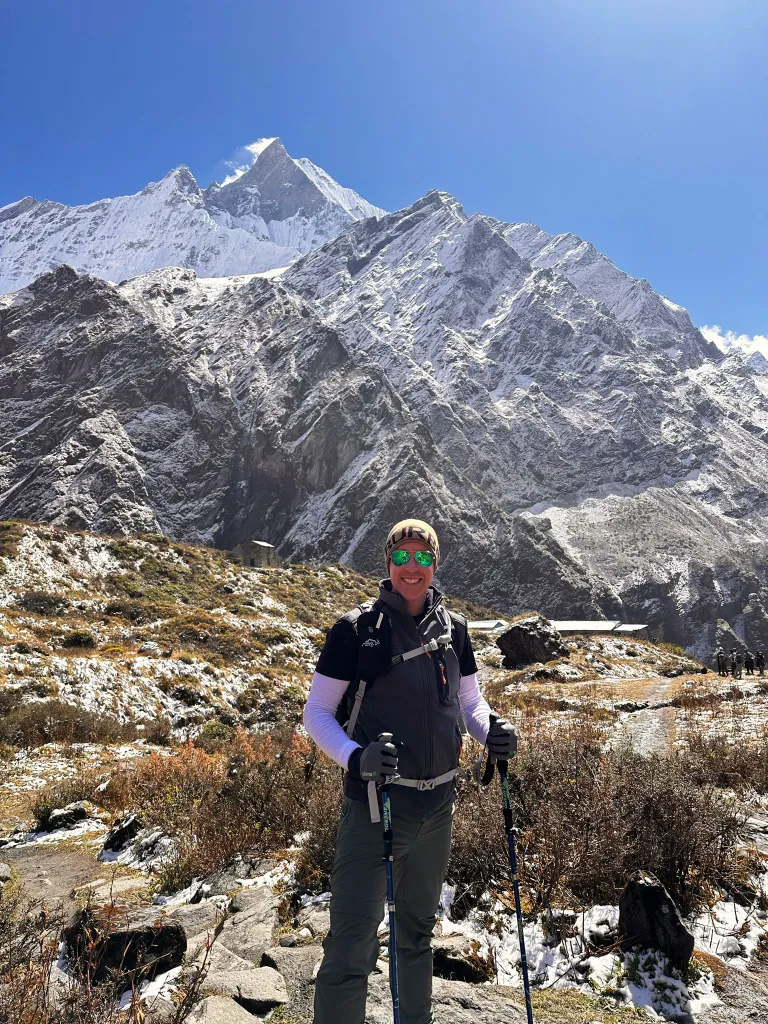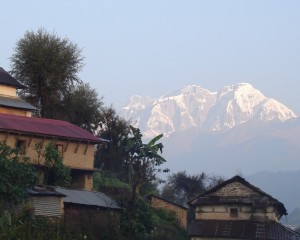Is Tsum Valley Worth It?
Tsum Valley Trek is an unexplored gem tucked away in the remote region of Manaslu. Many travellers aiming to visit the Manaslu Circuit Trek may not have the idea of the appealing blend of untouched landscapes, rich Tibteena Buddhist culture, and a solitary trekking experience. That is the experience Tsum Valley Trek offers all trekkers.
Away from the hustle and bustle, you walk through the diverse landscapes cascading waterfalls, crossing the suspension bridge alongside the yak and Himalayan sheep, and waving to the local people. It is the unparalleled experience that makes Tsum Valley worth it.
In addition, the Himalayan pilgrimage sites, with centuries-old monasteries, traditional villages, and stunning views of Ganesh Himal, Manaslu Himal, Sringi Himal, Naike, Himchuli and Ngadi Chuli, add extra allure to the journey.
Every element of the Tsum Valley Trek is meant to provide a deep cultural experience. So, every effort at the Tsum Valley trek is worth it. But how about we take you through a short exploration of the timeless world where nature, spirituality, and Himalayan culture come together in a breathtaking setting?
Overview of Tsum Valley Trek
Tsum Valley Trek encircles the hidden cultural gem of the Maanalsu region. Known as the Valley of Happiness, it is home to the ethnic Tibetan community of Tsumbas and has preserved ancient Buddhist traditions, dialects, and rituals.
Making your journey from the muddy road of Macha Khola along the banks of BudhiGandaki river northward through semitropical forest and dense foliage the trail reaches the picturesque village of Jagat thus branching away to the northeast Tsum valley and the retsited status of the region that has been away from the outside world. In addition to Chhekamapar lies the famous monastery of Rachen. Further, the legendary monasteries of Mu Gompa and Dhephu Doma, where the panoramic views from Chhekang Paro and Mu Gompa are just unbelievable.
During the whole journey of the trail, you pass through the spinning prayer wheel, flapping chorten, and monasteries catered all over the region. There are different gates in the entry of the villages that are believed to keep the evil away from their home. In addition to that, the valley upholds a strict no-killing rule a unique and peaceful haven for wildlife.
The rare highlight of the trek is the close connection to Tibet. The valley once thrived as a trade route with Tibet via the Nugla Pass, and remnants of these historical ties remain.
Compared to the classic Manaslu Circuit Trek, the easier trails of the Tsum Valley Trek have plenty of highlights attracting trekkers from all around the world.
- As part of the Manaslu Conservation Area, Tsum Valley is home to endangered species like snow leopards, red pandas, Himalayan tahrs, and blue sheep. The trek takes you through lush forests, high-altitude meadows, and dramatic Himalayan landscapes.
- Once known as Beyul Kyimolung, a hidden spiritual sanctuary, the valley is dotted with ancient monasteries, chortens, and prayer wheels. Key sites include Mu Gompa and Rachen Gompa, where Buddhist traditions have flourished for centuries.
- The Tsumbas, the valley’s indigenous people, have preserved their Tibetan-influenced language, customs, and lifestyle. Trekking here is a rare opportunity to experience their spiritual and communal way of life, which is far away from modernization.
- Unlike Nepal’s more commercialized trekking routes, Tsum Valley remains serene and secluded, making it ideal for trekkers seeking solitude, authenticity, and deep cultural immersion.
- The trek offers stunning panoramas of the Ganesh Himal, Sringi Himal, Naike, Himchuli, and Manaslu Himal, as well as diverse landscapes of rhododendron forests, deep gorges, and alpine meadows.
How Long is the Tsum Valley Trek?
Tsum Valley Trek takes around two weeks, depending on the chosen itinerary, acclimatization, needs, and side trips.
- Standard Itinerary (14–16 Days) – Begins in Soti Khola, follows the Manaslu Circuit route before branching into Tsum Valley, reaching Mu Gompa, and returning via the same path.
- Extended Itinerary (18+ Days): This itinerary includes extra acclimatization days, cultural exploration, and possible side trips to Ganesh Himal Base Camp or the Tibetan border.
- A Shorter Itinerary (12–13 Days) starts from Lokpa (after driving beyond Soti Khola) and focuses only on the Tsum Valley section.

Difficulty of Tsum Valley Trek
Tsum Valley Trek is considered less challenging in the Manaslu region. There are some manageable rugged terrain and altitudes that stand as challenges for the trek.
Terrain Challenges
The terrain of the Tsum Valley Trek is quite different. The narrow and rocky paths wind through steep mountainsides of villages and monasteries. Besides, some sections of the trek involve walking to the high-altitude pass with loose and uneven ground.
The muddy roads, suspension bridges, and alpine meadows add an extra level of challenge to the trek. Thus, walking these uneven land surfaces for weeks is a physical challenge for your body.
Elevation Gain and Altitude Concerns
The trek reaches altitudes of over 3500 m, the highest point being Mu Gompa, which is 3,700 meters.
As with any high-altitude trek, altitude sickness is a risk. The initial symptoms are shortness of breath, headache, vomiting, and nausea. However, in severe cases, high-altitude cerebral oedema (HACE) and high-altitude pulmonary oedema (HAPE) occur and require immediate medical attention.
Acclimatization is the best way to prevent AMS (Acute Mountain Sickness), especially since the trek involves multiple days of ascent without descent in between. To allow the body time to adjust, it’s important to include extra days for acclimatization, especially at key points like Chumling or Lho.
Experience Required:
- Trekking Experience: While no technical climbing skills are required, previous trekking experience in mountainous regions is recommended. Trekkers should be comfortable with long days of walking and some steep climbs.
- Beginner-Friendly with Proper Preparation: With some experience and the right level of fitness, intermediate trekkers can tackle this trek. Beginners should consider joining with a guide or on an organized trek if they are new to high-altitude treks.
- Guides and Porters: Since the region is restricted, hiring a guide and porter is a must. Guides ensure safety in remote areas and help navigate challenging terrain. Porters ease the physical burden by carrying heavy equipment so you can focus on the trek itself.
To wrap up, the Tsum Valley Trek offers a unique and peaceful adventure far from the busy trails of more popular routes. With stunning mountain views, rich Tibetan culture, and sacred Buddhist sites, this trek is a great choice for those seeking both natural beauty and spiritual connection. It provides a chance to explore the remote Tsum Valley, where you can experience the warmth of local traditions, see rare wildlife, and enjoy breathtaking landscapes.
Although the trek presents some challenges with its rugged terrain and high altitudes, it’s accessible to trekkers with a moderate fitness level.
Are you interested in the Tsum Valley Trek or other incredible journeys in Nepal? Plan your adventure with Nepal Vision Trek. Our experienced guides will help you navigate this beautiful and remote region, ensuring a safe and unforgettable trekking experience.
FAQs






